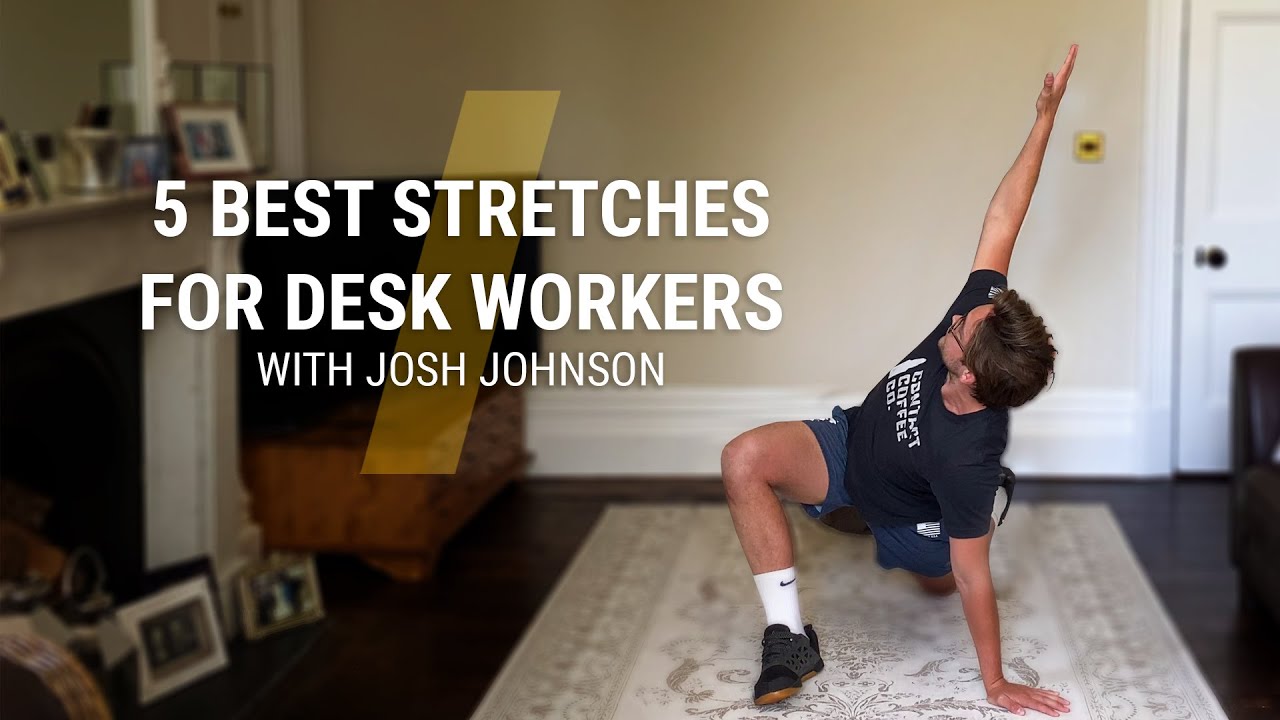Best Stretches for Desk Workers
You sit for long hours when you work at a desk. Your body feels tight because it remains in the same position for most of the day. Simple stretches help you release tension. They also help you stay comfortable while working. These movements keep your muscles active and protect your posture during long work sessions. Gravity Bird often guides readers on simple daily habits, and these stretches support that goal of practical comfort.
Why Desk Workers Need Daily Stretching
Your muscles become stiff when they stay still for too long. Your neck, shoulders and back carry most of the pressure from desk work. Small breaks with stretching help you reduce this pressure. You improve circulation because your body moves again. Stretching also improves focus because you release discomfort before it grows. You protect your long term health by adding these small movements throughout the day.
Neck Stretch
Sit straight. Lower your right ear toward your right shoulder. Hold for twenty seconds. Repeat on the left side. You release tension from the sides of your neck with this stretch. You also improve your posture because tight neck muscles often pull your head forward.
Shoulder Roll Stretch
Sit tall. Roll your shoulders forward ten times. Then roll them backward ten times. This movement keeps your upper body loose. It reduces the tightness that comes from typing and leaning toward the screen. Simple shoulder movement improves your upper back comfort.
Upper Back Stretch
Raise your arms in front of you. Interlock your fingers. Push your hands forward and round your upper back. Keep your chin slightly down. Hold for twenty seconds. This stretch releases the muscles between your shoulder blades. You feel lighter after this movement.
Chest Opening Stretch
Sit or stand tall. Pull your shoulders back. Place your hands behind you and interlock your fingers. Lift your chest slightly. Hold for twenty seconds. This stretch helps you balance the forward leaning posture that comes from computer work. Way Net Working often highlights habits that reduce strain during long work periods, and this simple stretch does exactly that.
Wrist and Forearm Stretch
Extend one arm forward with your palm facing down. Use your other hand to gently pull your fingers toward you. Hold for fifteen seconds. Repeat with your palm facing up. Switch arms. This stretch helps you reduce tension from typing and using a mouse.
Seated Hip Stretch
Sit on your chair. Place your right ankle on your left knee. Lean forward slightly. Hold for twenty seconds. Switch sides. This stretch releases tightness in your hips. Long sitting often creates stiffness in this area.
Hamstring Stretch
Stand behind your chair. Place one foot slightly forward. Keep both legs straight. Bend gently at your hips. Hold for twenty seconds. Switch sides. This stretch reduces tension from long hours of sitting where your legs stay still.
Calf Stretch
Stand near a wall. Place one foot forward and the other foot back. Keep your back leg straight. Press your heel down. Hold for twenty seconds. Switch sides. This stretch supports better circulation in your legs.
Lower Back Twist
Sit upright. Place your right hand on the outside of your left knee. Twist your upper body gently to the left. Hold for twenty seconds. Switch sides. This movement helps your spine stay flexible.
How Often Desk Workers Should Stretch
You should stretch at least every hour. Short breaks improve your comfort. You reduce long term stiffness when you make this a habit. Your body responds well to frequent small movements. You protect your posture and stay more focused throughout the day.
Build a Simple Stretch Routine
You do not need long sessions. You can pick five stretches and rotate them. You can also set a timer to remind yourself. You can stretch while waiting for emails or during short pauses in your workflow. You can also stretch before and after your workday to reset your body. These small steps help you feel more stable and relaxed.
Improve Your Workspace to Support Stretching
Your chair should support your back. Your screen should match your eye level. Your feet should rest flat on the floor. A well set space protects your body from extra strain. When your setup works well, your stretches become more effective. Small fixes often make a clear difference.
Add Breathing with Your Stretches
Deep breathing improves your stretch results. Inhale slowly as you prepare. Exhale gently as you stretch. This helps your body relax faster. You also feel calm when you breathe with control. It supports your focus before you return to work.
Track Your Body’s Signals
If a stretch feels painful, stop. Your body tells you when something is wrong. Stretches should feel gentle, not sharp. You can reduce the angle if needed. The goal is comfort, not force. Listening to your body protects you from mistakes.
End Your Day with Light Stretching
A short session at the end of the day helps you release pressure from your neck, back and shoulders. This helps you sleep better. It also prepares you for the next workday. Admin Wells often supports structured routines like this because they help you stay consistent and maintain balance.
Stretches Help Desk Workers Stay Comfortable
Your body needs movement to stay strong and flexible. These stretches support your comfort during long desk hours. They help your posture, reduce tension and improve your focus. When you repeat them often, your workdays feel easier.




